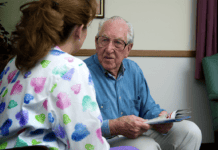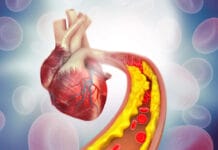The best diagnostic instruments offer the clinician and patient superior overall dental health and comfort. We deserve to have the very best diagnostic instruments with a proven record of quality and durability in order to offer our patients the most comprehensive diagnostic opportunity possible.
Diagnostic instruments are where dentistry and treatment begin. Clinicians must be able to see exceptionally well in all areas and have the best explorers and periodontal probes to fully treatment plan comprehensively.
Mirror Options
We know it all begins with the mirror. You deserve to see clearly from all angles and to provide excellent, comfortable retraction as needed. One option is a rhodium-coated mirror surface, where a very hard mineral is applied to the reflective surface to reduce scratching. Another option is the coated mirror that is designed to reduce glare.
Mirrors placed in the ultrasonic do become scratched over time from the repetitive contact with other objects. Even in a cassette, mirror heads can become scratched, reducing the clinician’s visibility and causing eye strain.
Mirror heads should be thought of as being semi-consumable. Extra mirrors should be ordered for quick and easy chairside replacement as needed. Multiple mirrors are a minor investment overall for excellent diagnosing ability and clinician eye comfort.
With multiple options available, how do you choose your favorite mirror? The two common sizes are the #4 (7/8 diameter) and the more common #5 (15/16 diameter) which is slightly larger.
The attachment style is a simple stem or cone socket. The simple stem is more common internationally, while the cone socket is more common in the United States. The cone socket locks the mirror head in place and seals the cavity in the mirror handle to increase stability. The cone socket style is universal for mirror and handle to expedite ordering.
Mirror handle designs are all available for simple stem or cone socket, and all will fit any mirror brand.
When choosing your mirror handle, consider the ergonomic aspects. An irregular shape increases operator comfort and reduces the pressure needed for stability. A lighter weight will be more comfortable on your non-dominant hand, decreasing fatigue. A wider diameter is easier on your hand grip and, equally important, increases patient comfort when retracting.
Do you ever see your patient with that telltale red line at the commissure of the lip, or even cracking and irritation from tugging on the tissue to retract? That can often be averted by using a mirror with a larger handle. Your patient will leave your appointment feeling so much more comfortable!
If a clinician really enjoys seeing everything in the patients’ mouth, they should try the double-sided mirror head. This is the most versatile mirror. Both mirrors, front and back, are reflective, which means that you can now clearly see the distal of the third molars. Clinicians can retract and still use indirect vision as well as increasing illumination. Literally, while retracting the cheek, you will clearly see the dentition from the backside of this amazing mirror.
Periodontal Probe Options
Periodontal probes must be of high quality for accurate markings, durability, and tensile strength. The probes that are the clearest to read are made from spring-tempered stainless steel with millimeter markings precisely cut into the probe’s tip. Color coding applied under extreme temperatures to penetrate the surface of the tip allows for durable marking of the measurement. This means the markings are physically etched into the stainless steel, not just a coating that will wear off.
There are a wide variety of periodontal probes − flat, round, plastic, and metal. The most common style is the 3, 6, 9, 12-millimeter format, as the single millimeter markings can be difficult to read and become subject to interpretation. In the past several years, the University of North Carolina probe has become increasingly popular with its single millimeter markings for dentists, although many hygienists find it difficult to read quickly.
There are many options in both single- and double-end periodontal probes, so choose your favorite. The most important aspect of probe choice is a standard probe for all practitioners in the office to create ease of use and consistency of readings. This allows for a standard of periodontal disease diagnosis and treatment with all clinicians in the office.
Look for a lightweight, ergonomic handle for overall best tactile sensitivity for both tissue and calculus detection, as well as ease of measurement reading.
Explorer Options
Thin explorers are exceptional at detecting decay, calculus, and other abnormalities. The thin, flexible tips that taper to a sharp point come in multiple single- and double-end options. The best explorer tips are made from spring-tempered stainless steel and are hand bent. This creates a thin instrument with high tensile strength for durability and long wear. Explorers with a lesser quality can be stiff, decreasing the flexibility and limiting a practitioner’s tactile sensitivity.
Explorer options are abundant. Some common operative options are the #2 pigtail, which has a very curved small bend, and the #3 cowhorn with a larger bend. The benefit of the #2 and #3 explorer is that they can be used for both calculus detection and examination for decay as they are slim and strong enough for both sub- and supragingival use.
The #5 explorer tip is excellent for detection of dental decay, although it has limited access subgingivally due to its large size and bend. The traditional back end is rarely used since posterior access creates a flexion in the tip, so consider pairing it with a rounded explorer as well for subgingival exploration.
All explorers should be super lightweight to ensure the clinician feels the sensation from instrument tip to fingers to accurately detect any imperfections in the anatomy of the tooth.
Double-ended explorer and probe combinations have become increasingly popular. These double-ended explorers and periodontal probe combinations save space in your kit while saving on cost as there is one less instrument to purchase. There are multiple double-ended explorer and probe combinations to choose from to meet your specific needs. All should be crafted from spring-tempered stainless steel. Look for probe measurements that are precisely cut into the tip and color-coded at extreme temperatures to penetrate the tip surface for durability, as well as explorer tips that are hand shaped. Choose the double-ended explorer and probe combo that best meets your needs, and you will love the shape, feel, consistency, and comfort in all of your patient examinations.
Your excellent diagnostic skills are what keep your dental chairs filled and your patients in excellent dental health. You deserve high quality, ergonomic, durable, diagnostic instruments to help you achieve excellence and superior patient satisfaction. Purchase instruments that are guaranteed to be the highest level of quality and consistency in the industry.
It is a fact that you can only be your best when you can see clearly and explore every aspect of the tooth surface, so try the best diagnostic instruments for proof that excellence makes your day extraordinary.










